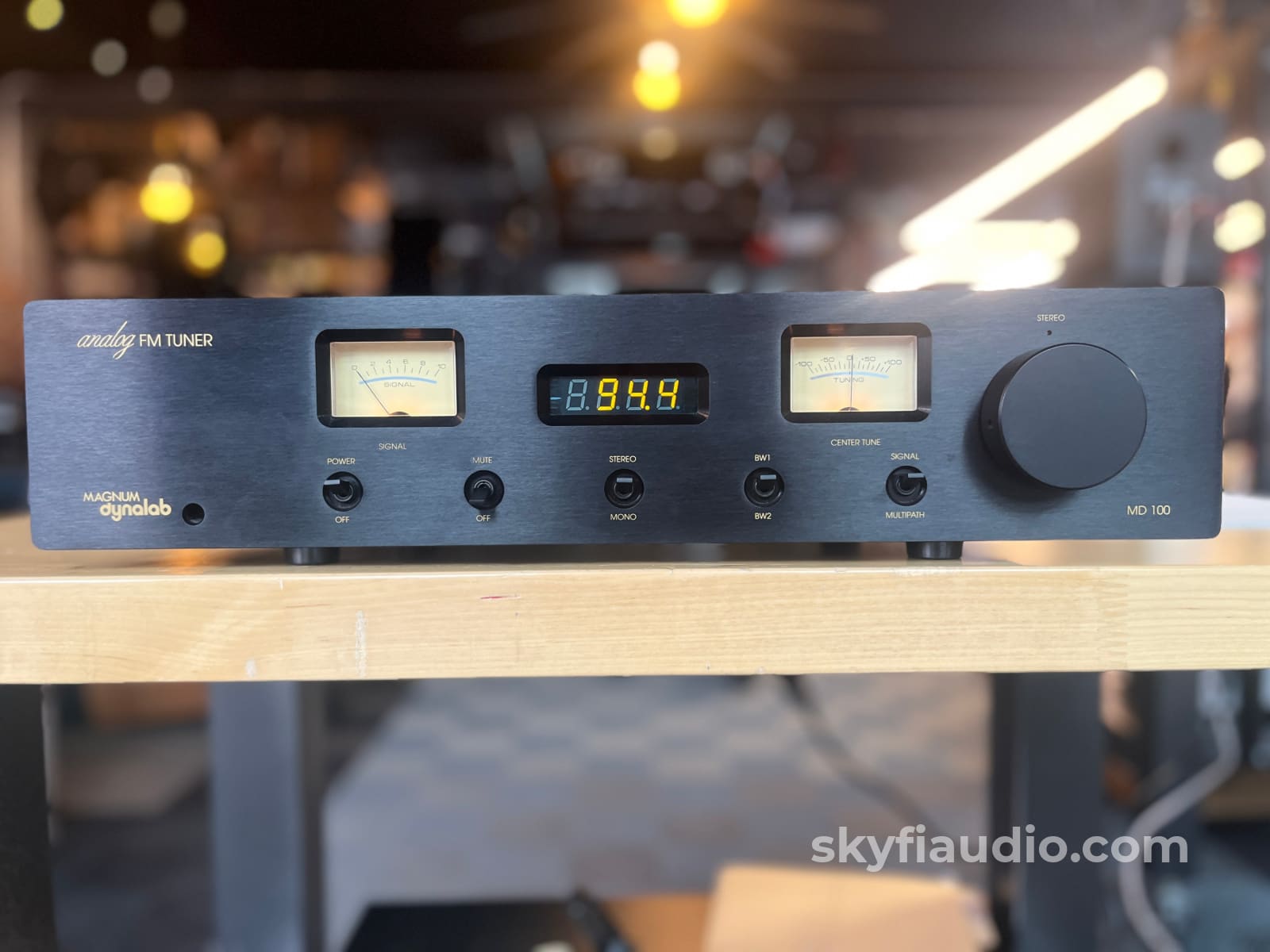
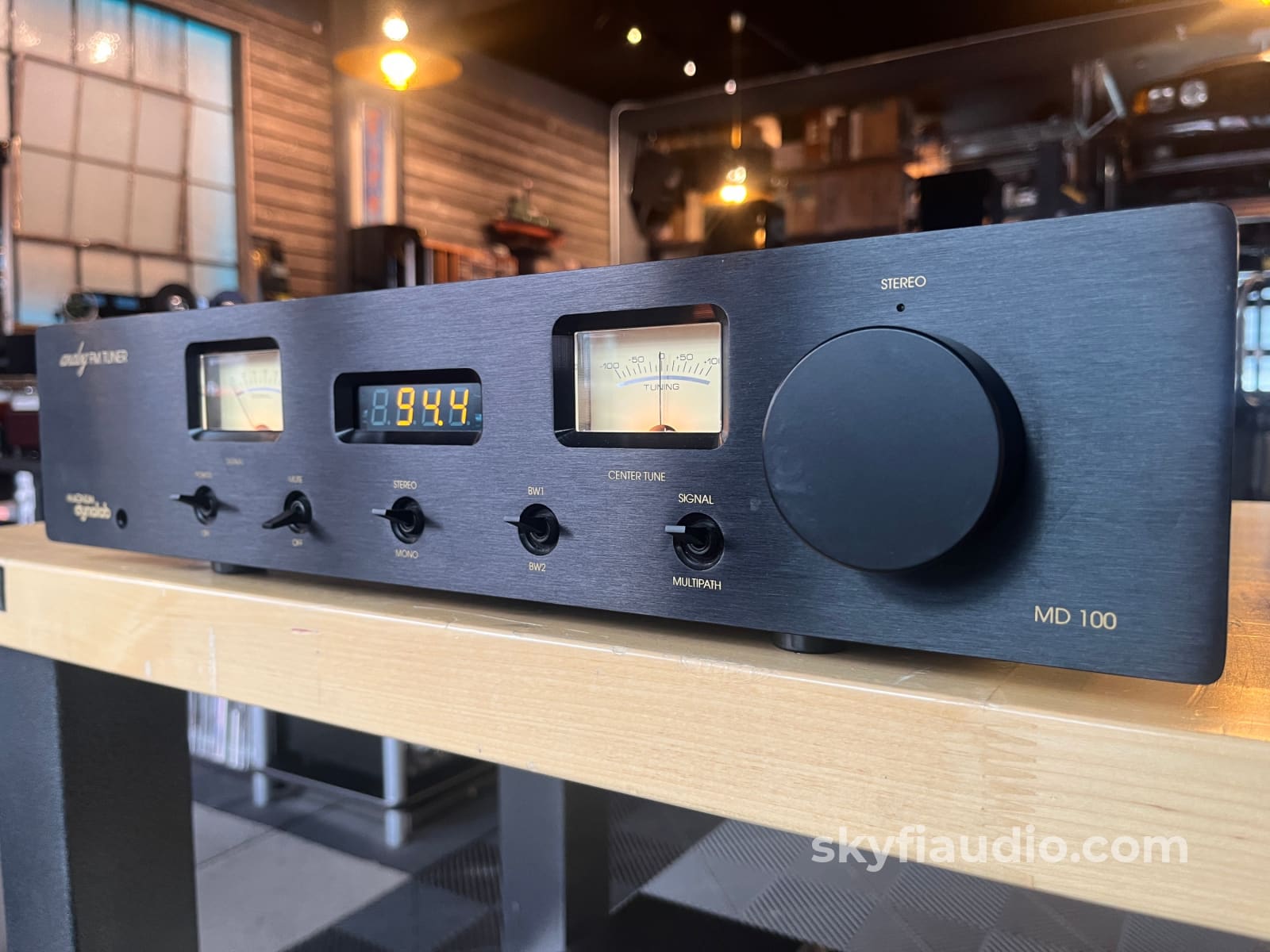
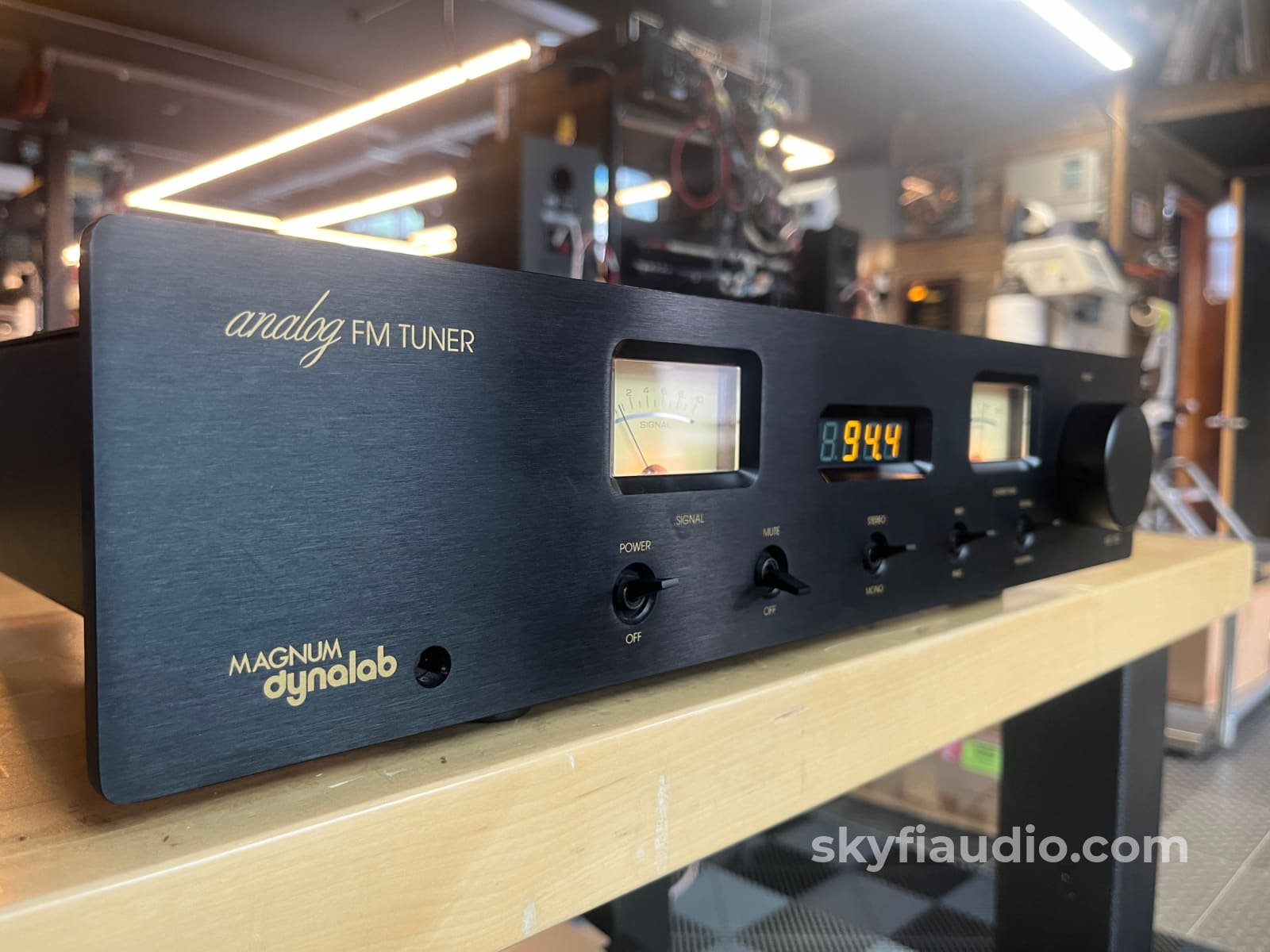
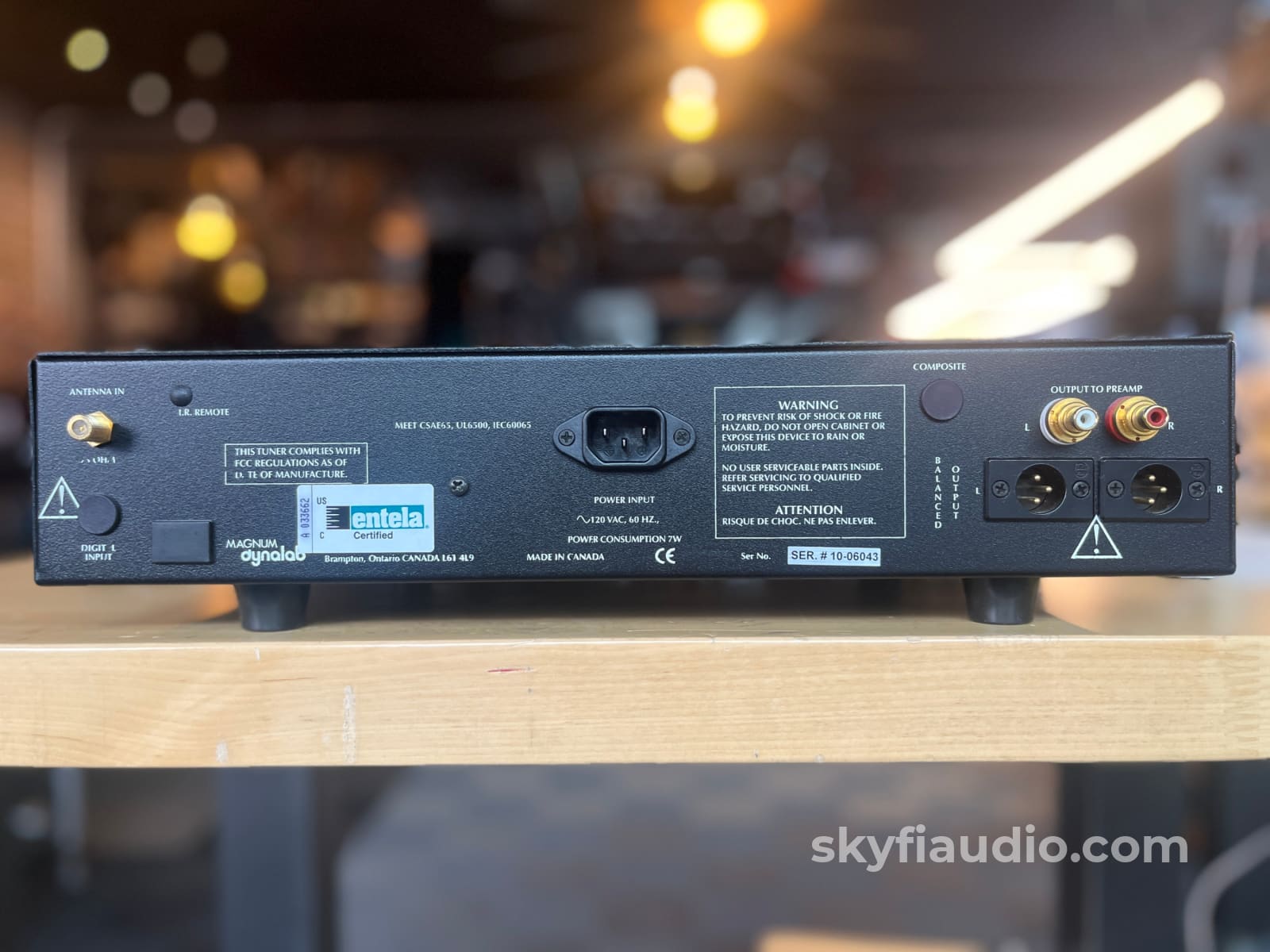
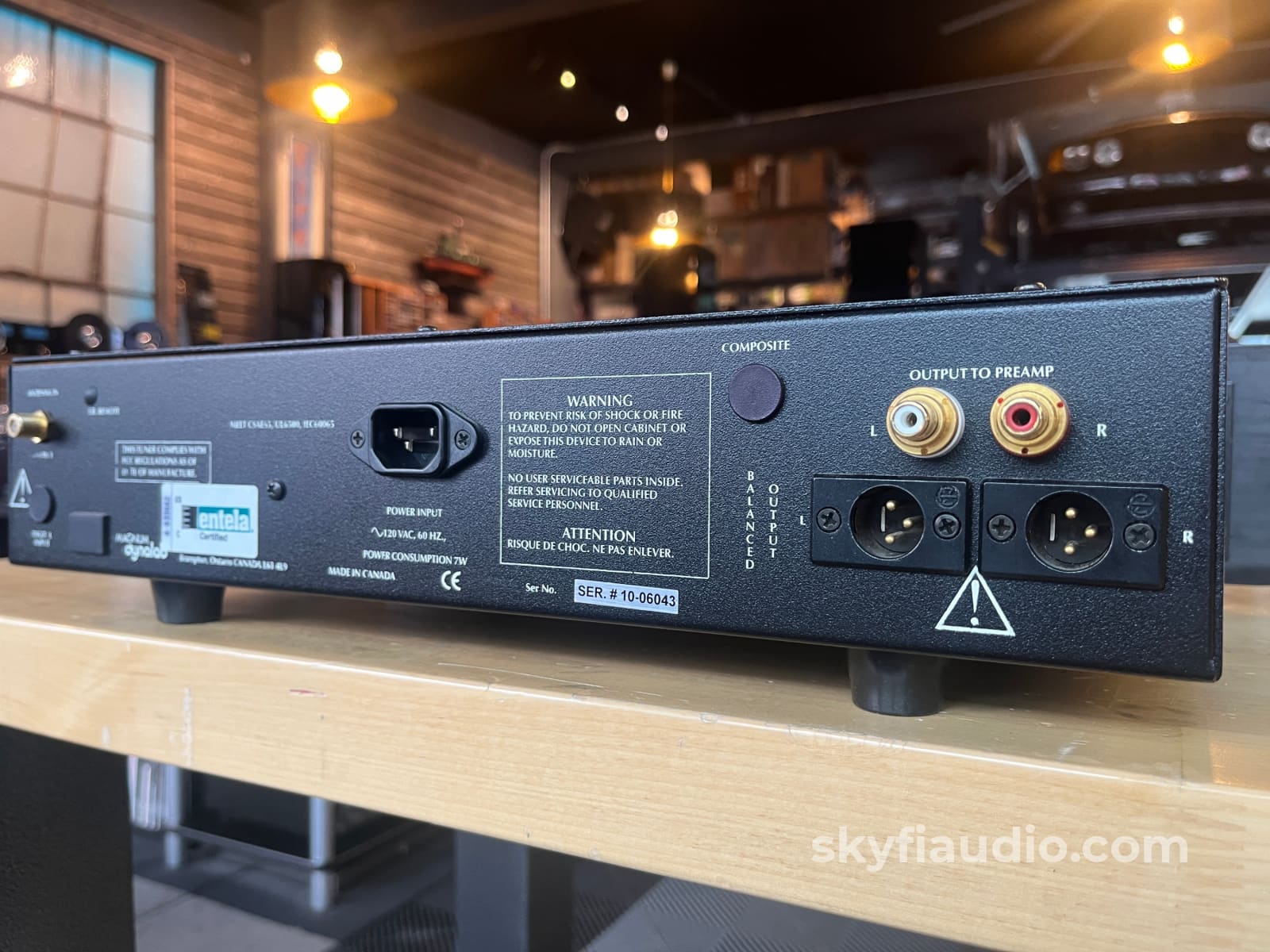
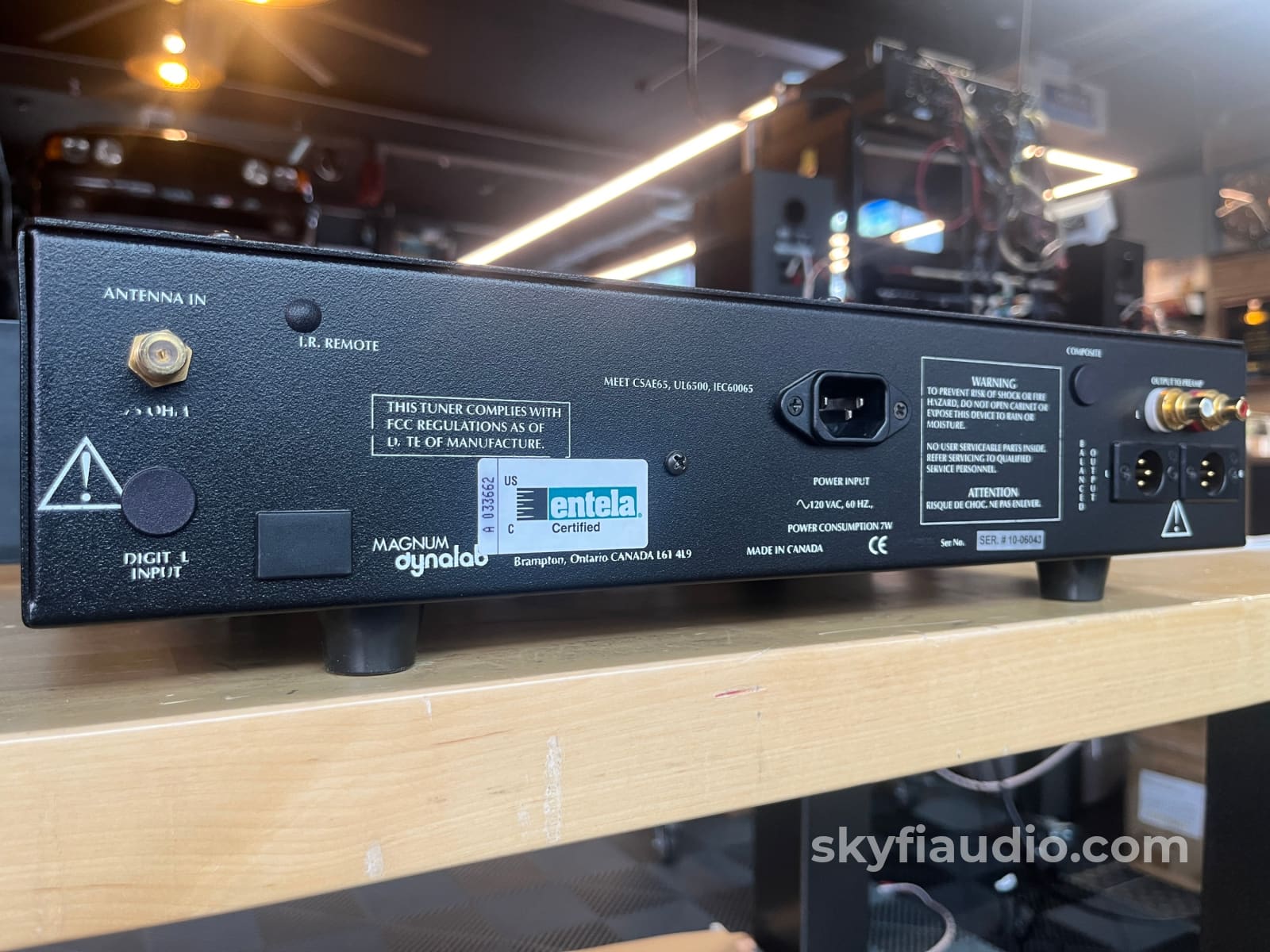
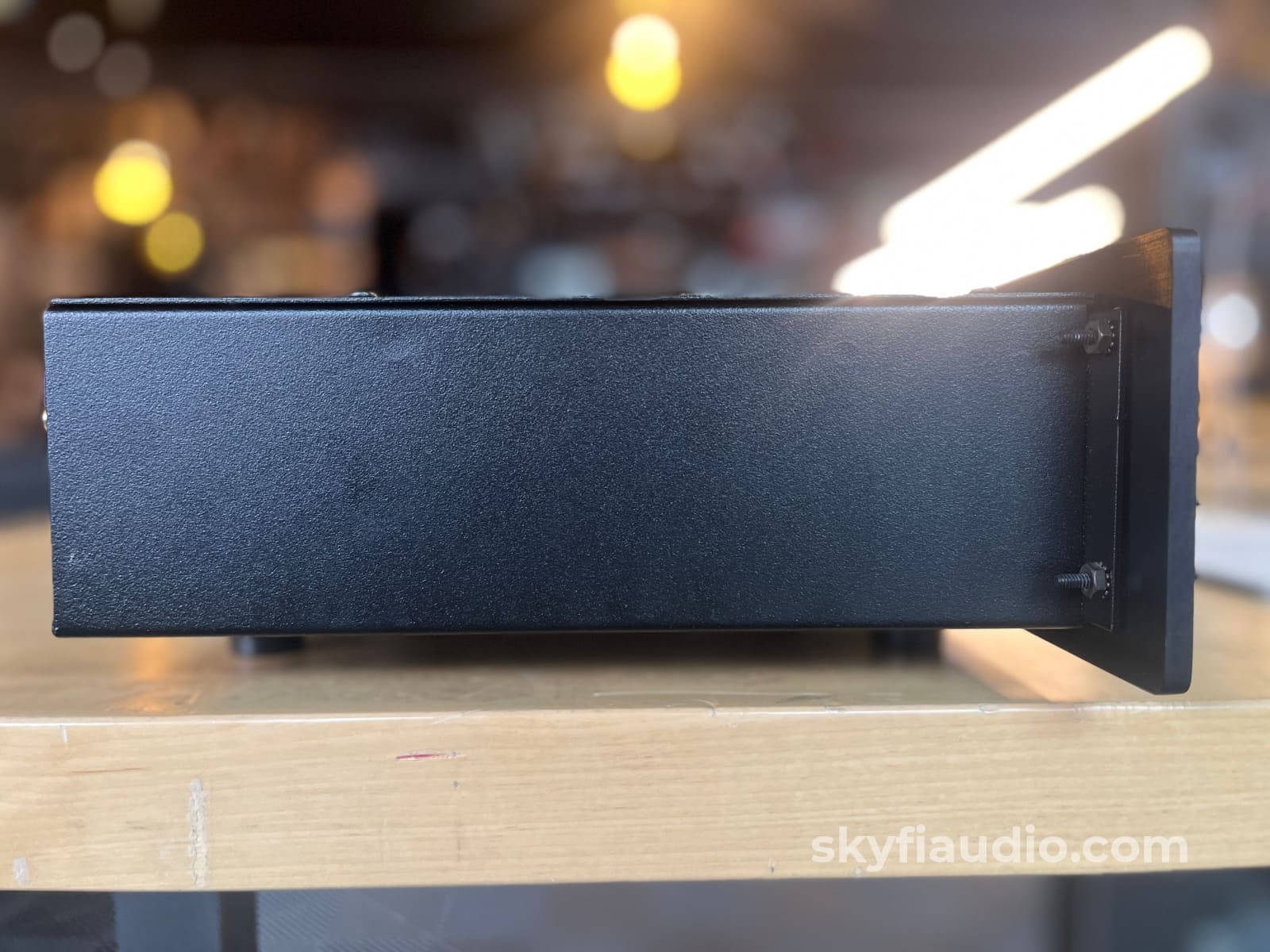
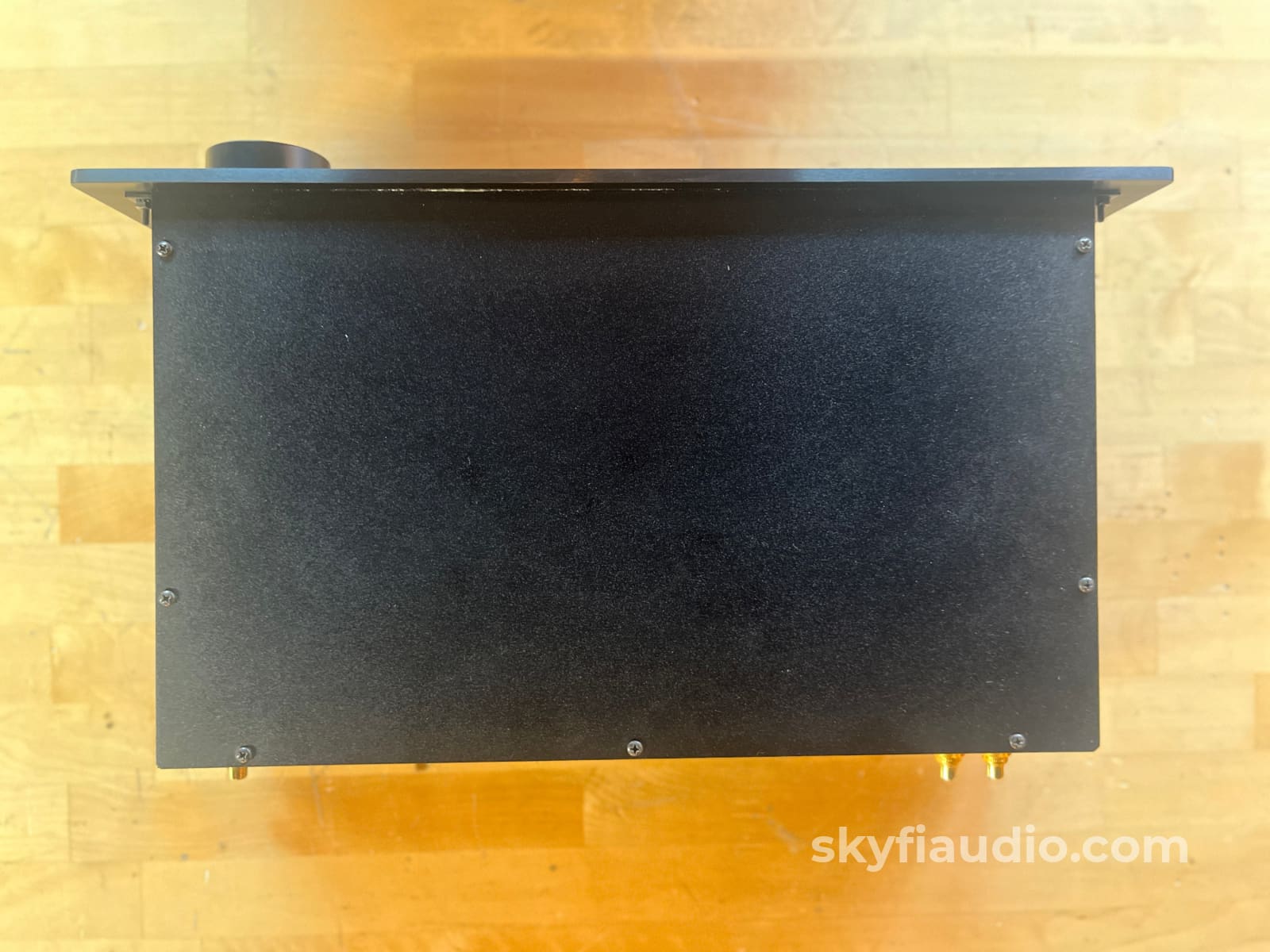
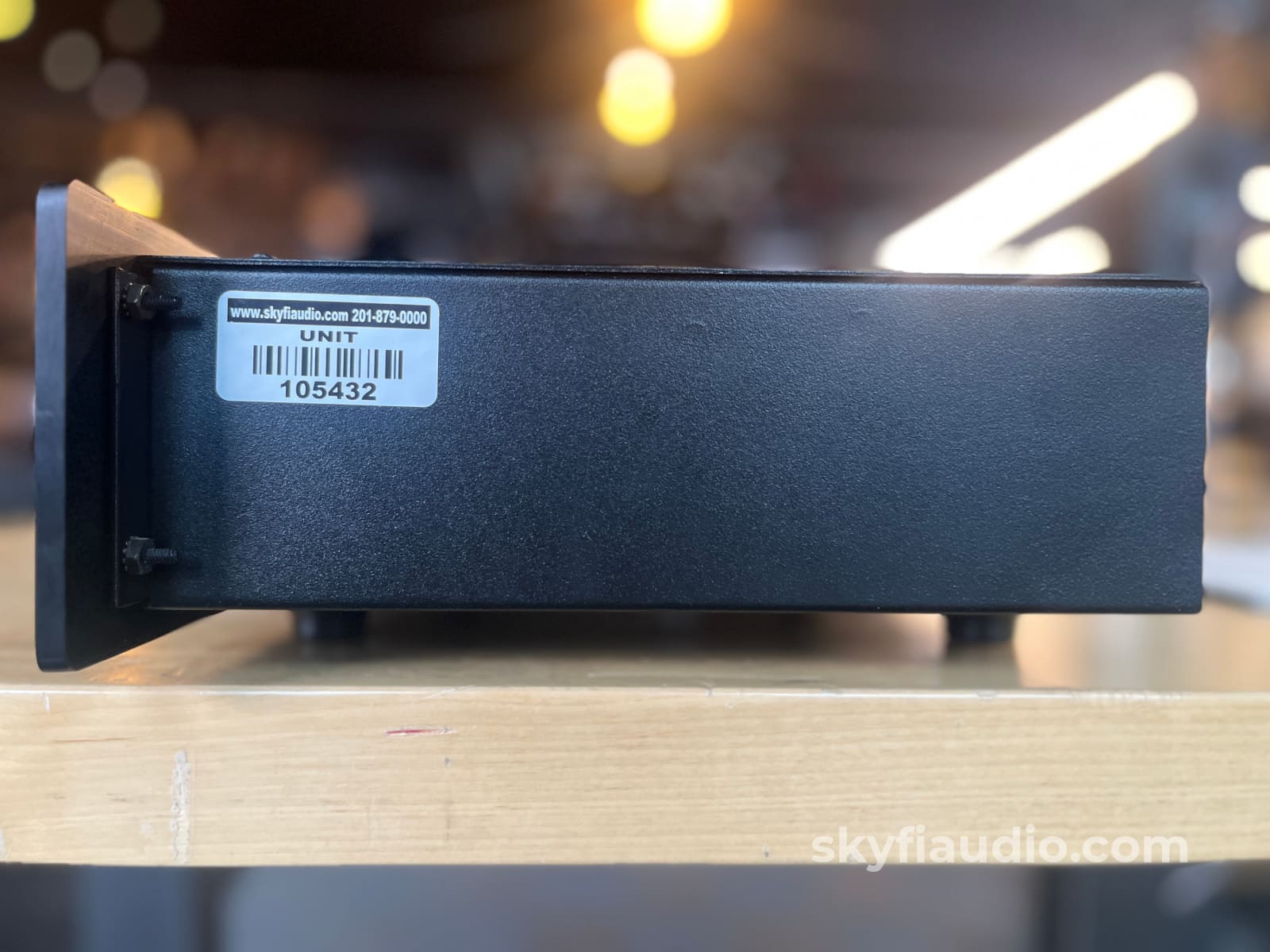
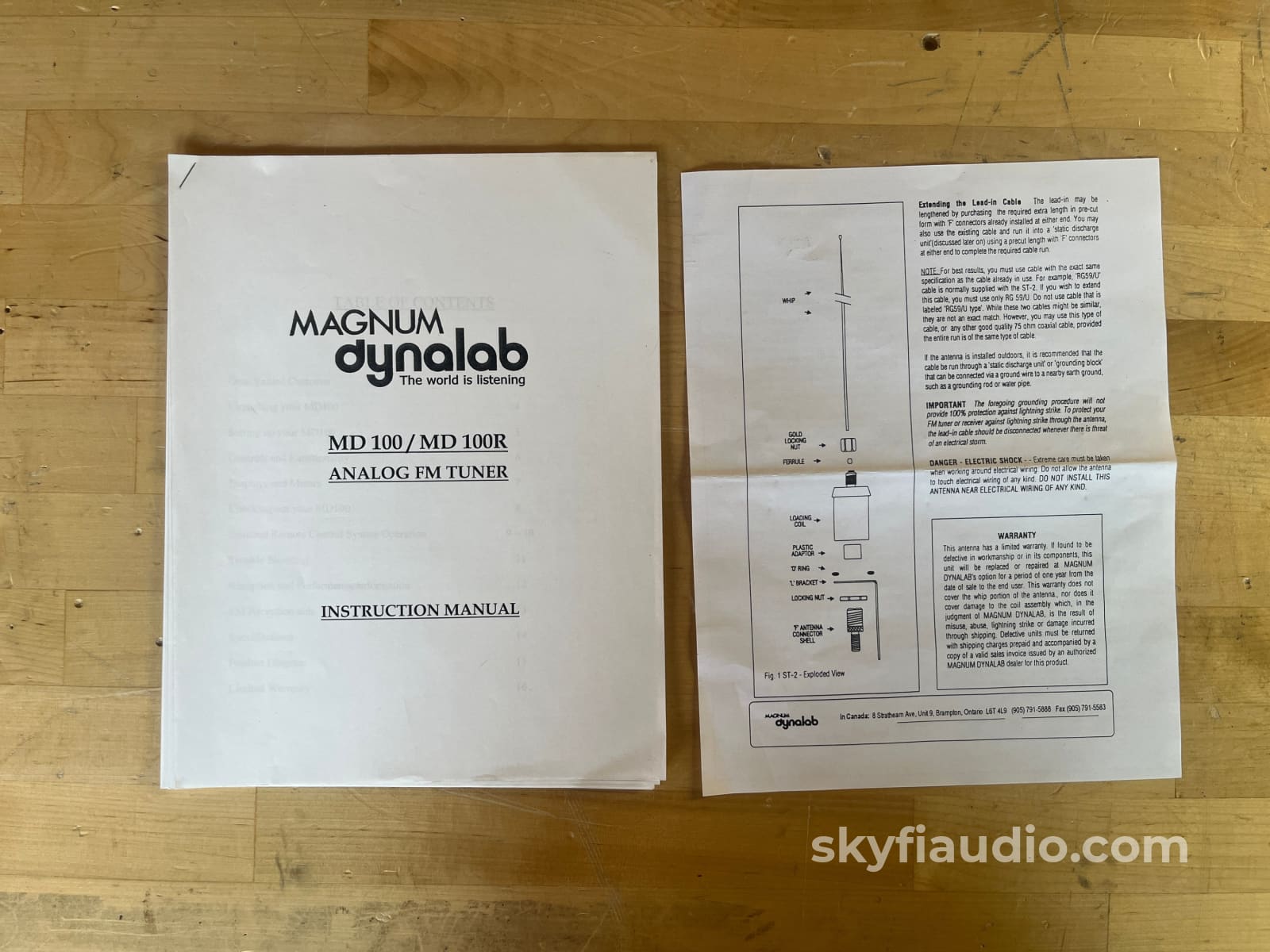

Magnum Dynalab MD-100 - Analog FM Tuner w/XLR Balanced Outputs
Free Shipping on Most Electronics - Excludes Speakers and Items Requiring Freight - Contiguous U.S. Only
Pickup currently unavailable at SkyFi 479

Magnum Dynalab MD-100 - Analog FM Tuner w/XLR Balanced Outputs
SkyFi 479
479 South Broad Street
Glen Rock NJ 07452
United States
General:
At this price point you'd be hard pressed to find a better tuner.
Sure a Tandberg 3001 or a McIntosh MR78 are valid adversaries, but restored versions of either put them in another price category.
If you don't need presets, this would be a great choice. I tend to use just one local Jazz station so I've never really had a need for presets.
This MD100 was tested and working flawlessly on our bench and long term testing area.
More from Magnum Dynalab:
Great care has been dedicated to the design, manufacturing and selection of components for the MD-100 FM Tuner. This complete process insures optimum listening enjoyment for many years.
The RF ‘front- end’ of all Magnum Dynalab tuners is an exclusive in-house designed and manufactured component. We are the only audio company in the world that manufacturers their own front-end, for the sole reason that no other manufacturer can build one that meets our exacting specifications.
The importance of a front-end to the tuner is the equivalent of a high performance laser mechanism to a CD transport. The front-end must gather the FM signal and isolate it from the extraneous aberrations inherent in the environment as well as the FM stations adjacent to it. Our rigid criteria for our tuners and their frontends insure that you get the most out of your FM reception with the highest degree of consistency available in the industry.
To insure that all specifications on our tuners are met at ALL frequencies, we manually align our tuners front-end at three frequencies (92 MHz, 101.5 MHz and 106MHz). This process optimizes tuning performance across the entire FM band, so that you attain the same levels of quality regardless of where you are tuned. These procedures also ensure that the balance between SENSITIVITY, SELECTIVITY and MUSICALITY are maintained.
Your tuner is now optimized to reject strong adjacent channel noise, provide more consistent levels of tuning performance across the FM band and to have a superior ability to isolate the station you wish to listen to from the extraneous interference of the surrounding FM signals.
SkyFi Cosmetic Notes:
Good condition overall, only some light scratches barely visible.
Ownership:
Single Owner
Connections:
RCA outputs, Balanced outputs, Antenna connection
General Sound:
Accurate to the recording
Cosmetic Condition:
8/10 = Very Good. Excellent front faceplate, one minor flaw on chassis side or top. See our detailed rating description here.
Working Condition:
Working perfectly and tested in our lab.
Included:
Unit, manual, and power cord.
Packing:
Original Manufacturers Packing
Specs:
Usable sensitivity (mono): 10.3dBf
Usable sensitivity (stereo): 11.2dBf
50dB quieting sensitivity (mono): 13.2dBf
50dB quieting sensitivity (stereo): 34.0dBf
Alternate channel attenuation (wide): >60dB
Alternate channel attenuation (narrow): >80dB
Adjacent channel attenuation (wide): 12.0dB
Adjacent channel attenuation (narrow): 30.0dB
Audio frequency response (+/- 1dB): 10Hz - 17.5Khz
THD (mono): 0.10%
THD (stereo): 0.18%
Capture ratio: >1.5dB
AM suppression: -70.0dB
Image rejection: 75.0dB
Signal to Noise ratio (SNR): 80.0dB
Stereo separation: 50.0dB
SCA rejection: -75.0dB
19 & 38 KHz rejection: -70.0dB
Audio outputs (@100% modulation): 1 volt
Balanced audio outputs: 600 ohms
Power required: 120Vac \*@ 20 watts (max)
Weight: 15 lbs
Dimensions:
19" (w) x 13" (d) x 4.25" (h)
Weight:
15 lbs.
Link to Manual:
Click Here
Recommended Cables:
Kimber Kable - RCA Interconnects - Better
Kimber Kable - RCA Interconnects - Best
Kimber Kable - BALANCED XLR Connectors - Better
Kimber Kable - BALANCED XLR Connectors - Best
Kimber Kable - Power Cords - Better
Kimber Kable - Power Cords - Best
Testing Process:
We start with a visual inspection of all internal components to make sure that there are no signs of heat stress or damage. Capacitors are checked for telltale signs of predictive failure including bulging, shrunken wrappers, or physical leakage. We also inspect the PCBs for discoloration from resistors or transistors that may have been running hot.
On vintage units we often spot check select capacitors for value and ESR. Vintage analog tuners also have moving parts related to the tuning gang and dial string. These parts are inspected for smooth operation.
If the unit passes visual inspection it is bench tested for a handful of key performance parameters using a Sencore SG80 AM/FM Stereo Analyzer. The SG80 allows us to “simulate” an ideal radio station using precision test signals instead of music. This device in conjunction with an oscilloscope allows us to properly evaluate the following parameters:
1) AM Reception (Where Applicable)
2) FM Mono Reception & Tuning Meter Function
3) FM MPX Reception (Stereo)
4) Dial Tracking: How accurately the tuner dial or display indicates the actual frequency of the broadcast being received.
5) Stereo Separation: A properly working stereo tuner will have minimal crosstalk between the left and right channel.
6) Sensitivity & Signal Strength Meter Function: By lowering the output of the SG80 we can simulate weak stations and determine how well the tuner will be able to pull in weak distant stations. This adjustment also helps us verify signal strength meter function.
If the tuner has acceptable performance related to the parameters above we connect the unit for listening tests with a simple dipole antenna. We listen for audio reproduction quality of local stations and evaluate how many stations the tuner can receive while we sweep through the dial.
We are looking to verify that the tuner can decode stereo on strong local broadcasts and pick up a wide variety of local stations at the bottom, middle, and top of the frequency band. At this point we also test convenience features such as muting, filters, built in oscilloscope function, etc.
We finish up with an extended listening test on our long term test rig. We tune in to a strong local station and monitor for drift over a minimum period of 2-3 hours.
Choose options
